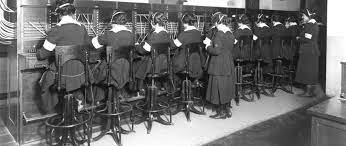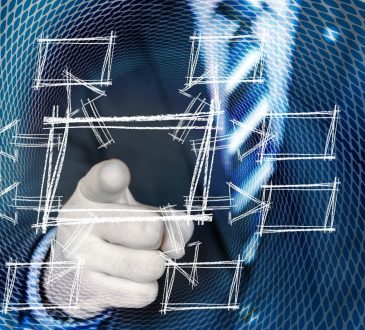
The world of business is truly fascinating. Businesses provide a livelihood to the majority of the human race. Even farmers also depend on businesses to sell their products and get inputs for farming.
However, to most of us, the world of business remains a mystery. In this series of blogs, we try to unravel the mysteries of the business.
In this blog, we will learn about the ‘History of Customer Service.’
Humans figured out trade very early on. By 3000 BC, humans were setting out on missions of water-bound trade, and by 1000 BC, merchants were becoming a part of societies. There were ideas about how to treat customers. The butcher, the baker, and the local perfumer had to meet the needs of the customer with custom products as well as nascent marketing techniques. The beginning of the industrial age brought the vast new challenge of a customer base the proprietor would likely never meet in person.
The Internet makes that problem more extreme but it offers new opportunities to bridge the gap. Here is a brief overview of some of the milestones in Customer Chat Room Service and where we might go in the future.
The Internet makes that problem more extreme but it offers new opportunities to bridge the gap. Here is a brief overview of some of the milestones in Customer Service and where we might go in the future.
1760-1820: The industrial revolution creates the concept of “scale” and the need for customer service teams.
1776: Adam Smith publishes the Wealth of Nations, establishing the basic ideas of competition in the marketplace.
1868: Watkins Liniment became the first company to offer a money-back guarantee.
1876: Alexander Graham Bell patents the electric telephone. Customer service takes a leap forward as customers can avoid having to travel long distances for product information or to arrange for repairs.
1887: Coca-Cola issues the first discount coupon.
1946: The International Organization for Standards formed in Geneva, Switzerland.
1965: MIT’s CTSS Mail becomes the first host-based electronic mail program. Email becomes the primary way of interacting with customers online when the Web emerges in the 1990s.
The 1960s: Private Automated Business Exchanges (PABX) began to be used to handle large numbers of calls. These became the “call centers” we’re more familiar with now, where a large number of operators handle customer conversations in one location.
The early 1980s:
The invention of Interactive Voice Response (the thing that lets you say “yes” or “representative” to the telephone and automatically connects you).
The 1980s: Database software, which would evolve into Customer Relationship Management (CRM) software, evolves to be used in customer service.
1983: The term “call center” is created.
The 1980s: The help desk emerges to deal with a host of new DOS-wielding office workers. By around the year 2000, these had evolved into the “service desk” concept that could help users with the integration of all of their business technology, though the term help desk” still is applied.
In the late 1980s: Quantum Link creates On-Line Messages (OLM) for the Commodore 64, paving the way for instant messaging and later, live chat. Q-Link later became AOL.
The early 1990s: Computer Telephony Integration (CTI), works with IVR technology to collect information about customer behavior in telephone systems.
The early 1990s: People begin to use the Internet. One may have heard of it.
1992: Customer Service Week established as the first week in October by President George H. W. Bush
The mid-1990s:
The CRM as we know it began to emerge, led by software company Gartner, though many others competed. As a result of more sophisticated customer data tracking, more companies began providing gifts for customer loyalty, such as cashback on credit cards, frequent-flier miles, and discounts for multiple purchases.
1998: Jeremie Miller invents Jabber/XMPP, the open-source technology that most live chat is built on, including GTalk, Olark, and others.
Late 1990s-early 2000s:
Outsourcing customer service to offshore locations gains popularity as the dot-com bust occurs and companies overall look to cut costs. In 1999, Salesforce.com launches and grows to be the global leader in CRM.
The mid-2000s: The rise of the online help desk, with the launch of Zendesk, Freshdesk, Zoho, Desk.com, and others.
2006: Twitter launches. By 2011 65 million tweets are sent each day and companies begin to find Twitter a good platform to respond to customers quickly when they have issues (or compliments) and to have a sense of the person’s “social relevance” based on a number of followers.
The late 2000s:
Some companies turn against offshoring customer service as customers feel alienated by agents who they can’t relate to or don’t seem to have agency within their organization.
2015: Facebook launches Messenger for Business, and sets the pace for companies using messaging technology to contact customers on their mobile devices.
- AI – artificial intelligence – speeds innovation;
- Slack becomes an even stronger support tool;
- Mobile chat gets way better;
- Even small businesses get in on the customer support activities.
2017: The chat world becomes differentiated by Live Messaging and Live Chat.
2020: Zoom took over skype to ease Work from home opportunities due to Covid’19
The AI debate heats up, as Facebook rolls back their chatbot, and customers become frustrated with the lack of quality in a bot.
The Customer Service industry is organizing into a proper professional organization with conferences, meetups, and clearer career progression within the support.
Read More: best medicine for erectile dysfunction Fildena 150
About Adaptive US
Adaptive US is the world’s #1 leading IIBA EEP. It is the only training organization that provides IIBA certification training with Success Guarantee. Adaptive is a World Leader in IIBA CBAP training, IIBA ECBA training, IIBA CCBA training, IIBA CBDA training, IIBA CCA training, and IIBA AAC training.
Adaptive is a global leader in business analysis certification training with 800+ internationally certified professional. It also conducts BA skill training on Jira, BPM, MS Visio, Balsamiq, UML, Interview Preparation as well as Resume Preparation.
Adaptive has published the following books on business analysis-
- The Handbook of Business,
- 1000 BA Interview Questions,
- Business Consulting 101,
- Practical Requirements Engineering,
- Agile Business Analysis,
- Big Book Of Corporate Jargons,
- Giant Book of BA Techniques,
- Stories for Trainers,
- Practice BA Techniques with Lucidchart,
- Mastering CPRE-FL,
- CPRE-FL Question Bank,
- A Beginner’s Guide to IT Business Analysis.





